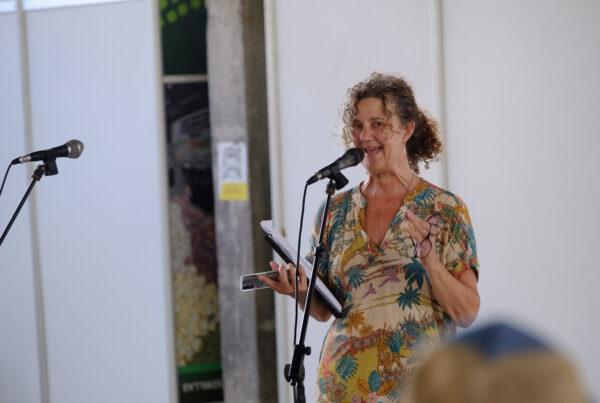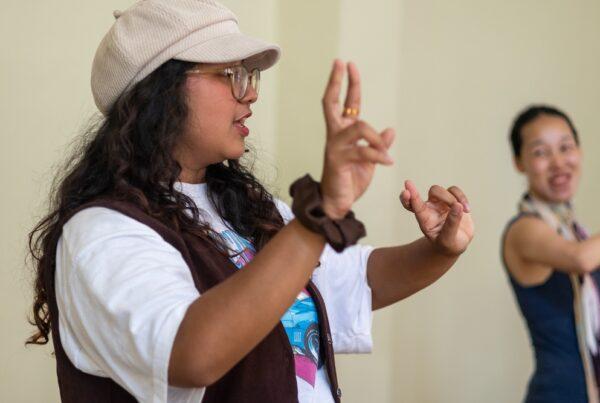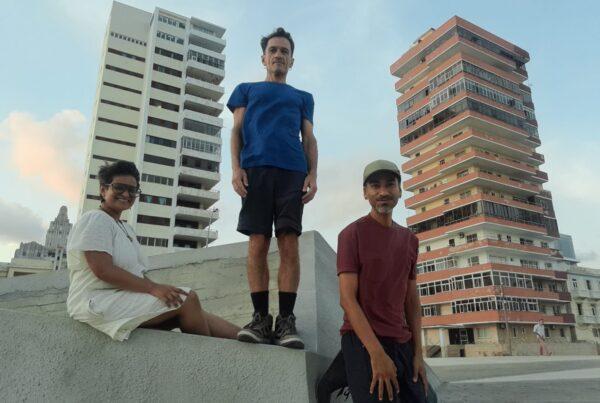
A reflection by Keiu Virro
Who are the children from Cuba’s most famous little beehive, La Colmenita? Let’s find out a bit more.
If you attended the opening ceremony (or even if you didn’t), you are probably familiar with the name La Colmenita. The opening performance “La cucarachita Martina”, in which children filled the stage with energy, songs, and dance for over an hour without any sign of fatigue, is one of La Colmenita’s best-known works.
How one feels about the fact that the happy ending of the production is marked by the appearance on stage of a young (and fierce!) girl playing the protagonist in a wedding dress is probably a matter of taste and cultural context. However, the fact that the children themselves, in addition to their energy, had a great sense of fun on stage is something that no one can deny.
And all those tiny bees in the audience (some with police badges on their shoulders—to distinguish groups, I’m told later)? They are also part of La Colmenita. In any case, the unveiling left me wanting to understand a little better who they are. So, when the La Colmenita workshop (which turned out to be very nice presentation) appeared on the festival schedule, that’s where I headed. There were only four representatives from the festival crowd, so in the hope that what the young people are doing will be of interest to many more, I’ll share some background. In addition, here is a short video clip and photo gallery (both courtesy of the people of La Colmenita).
We were joined by a huge number of children we had seen on stage just a few days ago. They were joined by several team members, including an energetic gentleman with a whistle who made himself memorable to the audience. And, of course, Carlos Alberto Cremata, founding director of La Colmenita.
The following is what we heard at the workshop presentation. Although I believe the reader does not need to be reminded of it, I will say it more for myself: Cuba is a peculiar context. To understand how things work and happen, sometimes you need much more context than what you hear on the spot. I do not pretend to understand the nature or the inner life of La Colmenita, but we got to see a glimpse of them and I’m truly thankful for that.
First of all, the background facts. La Colmenita was created in 1990. It operates in various cities in Cuba, but also in Mexico, Argentina, Venezuela, Nicaragua, and Spain, and it takes children and their productions to world theatre festivals. La Colmenita is for 5 to 14-year-olds, and they say they welcome anyone who wants to join, regardless of skills, abilities, or needs. It is not part of the compulsory school programme. And there are no auditions. No tests. No fees.
In 2007, they were recognised by UNICEF. Children also perform for those who cannot afford it, with much emphasis on inclusion. Children are not taught to read music; they sing and play the instruments by ear. It is emphasised to us that the aim is not to produce the artists of the future. “Children must have fun,” says Carlos Alberto Cremata. “Art is a pretext to pass on to children the fundamental values of being human.” Which ones? “Honesty, sincerity, kindness, cooperation, patriotism,” Cremata lists.
The role model here is largely Cuba’s national hero, José Martí, a politician, nationalist, journalist, playwright, poet, translator among many other things, who is quoted repeatedly. Referring to him, Cremata says that their main aim is to do good, not to do good art.
Except that, given what follows—the songs, the dances, in which we are also involved more than just as spectators—it is safe to say that making the good art part is also going well (even apart from a few questions that are still a bit up in the air…).
These kids are full of hope. You can feel it not only in their performance but also in the hugs they give us on the way out. Since what I see in Cuba fills me with rather conflicted feelings every day anew, I will say this: I hope that the future of these children will never lose hope in them.
See what they are doing, for example, in their facebook page.























